
Forgotten Fabulous Fall Color Trails
Martin Forest: One of the Five Best Preserved Areas in the Crum Woods
As we enter fall color season, we continue our series discussing the five best preserved areas in the Crum Woods. Martin Forest is a 30 acre tract of nearly/entirely forested land, and an ideal area to experience autumn color. This old-growth stand has been described by Roger Latham, an ecologist and conservation biologist, as an extraordinary piece of living history. To give a hiker perspective on the importance of Martin Forest, most of the Crum Woods is mature second-growth forest.
Old-growth forests are natural forests that have developed over a long time, generally at least 120 years, without experiencing any severe, stand-replacing disturbance— fire, windstorms, or logging. Characteristics of an old-growth forest that are present in the Martin Tract include:
- “Tip-ups” (where the trees have tipped over)
- Some trees close to their maximum longevity
- A natural regeneration of successional and dominant tree species within canopy gaps or on decaying logs, and multi-aged stand structure.
- Associations of long-lived, shade-tolerant tree species (beech, hemlock, red maple)
- Land preserved under one owner between 1870-1889
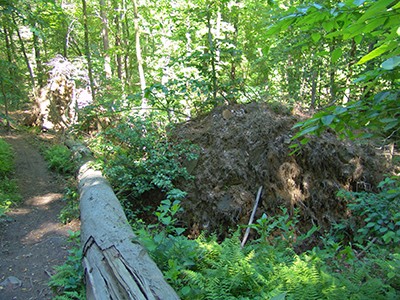
A characteristics of an old-growth forest, tip-ups can be found along the trails. photo credit: R. Robert
Located in the shadow of the Blue Route (Route 476) in Springfield, PA, the Martin Forest is bordered by Smedley Park (120 acres) and Jane Lownes Park (23.4 acres). This hemlock-mixed oak forest contains a CDCA sewer line right-of-way along the Crum Creek. A trailhead can found at the rear of Smedley Park where the parking lot ends with playing fields.
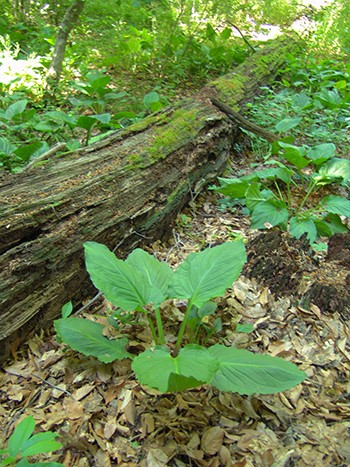
Decaying logs surround by an understory of skunk cabbage is another characteristic of an old-growth forest. photo credit: R. Robert
This tract has been studied for centuries. John Harshberger (1869-1929), professor of botany at University of Pennsylvania, president of the Botanical Society of Pennsylvania, and President of the Pennsylvania chapter of the Wild Flower Preservation Society, wrote A phyto-geographic sketch of extreme southeastern Pennsylvania, published in the 1903 edition of the Bulletin of the Torrey Botanical Club. This article described the Martin Forest (then the property of Mr. J. Howard Lewis, Sr.) as the best example of an old-growth forest remnant in Delaware County.
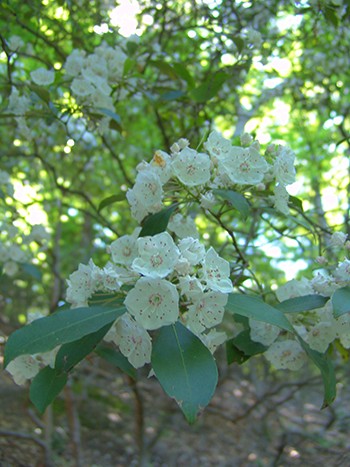
Stands of mountain laurel, Kalmia latifolia, can be found along the hillside in Martin Forest. photo credit: R. Robert
He also used the Martin Forest tract as one of several models for piecing together the species composition and general appearance of the forests of southeastern Pennsylvania before Europeans settled the area. The Martin Forest was Harshberger’s model for a “hemlock-mixed oak” forest type.
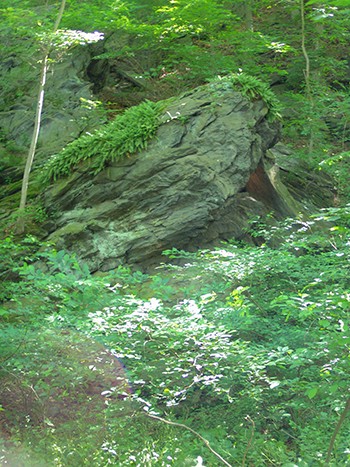
A half-circle of steep slopes where jagged, massive boulders and cliffs form breaks in a dense cover of oak, eastern hemlock, and mountain laurel in the forest. photo credit: R. Robert
In 2010, Andrew Bunting, former curator of the Scott Arboretum, described the tract as the finest natural forest the College owns. Today, the Martin Forest represents the most intact urban forest fragment in Delaware County, PA.
Hikers can find tuliptree and American beech dominating this remnant old-growth forest stand. Together with boxelder, red maple, sugar maple, bitternut hickory and green ash, a rich understory exists including witchhazel, spicebush and bladdernut, and a lush growth of mostly spring-flowering herbaceous plants. Spring showcases wild ginger, blue cohosh, spring beauty, Dutchman’s breeches, yellow trout lily, Virginia waterleaf, dwarf ginseng, mayapple, skunk-cabbage, bellwort, downy yellow violet, and common blue violet. Sixteen of the tuliptrees are giants, with trunks up to 5 ft. 7.7 in. (172 cm) in diameter and heights over 100 feet (30 m).
Bordered on one side by the wild reach of Crum Creek and on the other by a half-circle of steep slopes where jagged, massive boulders and cliffs form breaks in a dense cover of oak, eastern hemlock, and mountain laurel, the Martin Forest is a dramatic landscape to explore this fall.





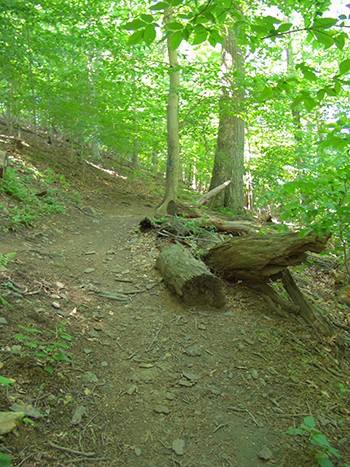
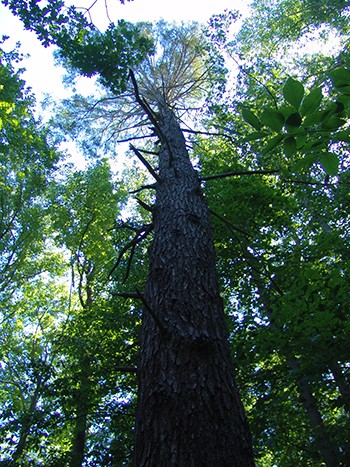
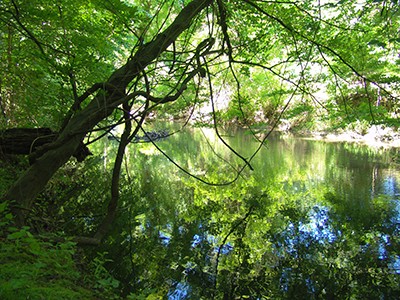
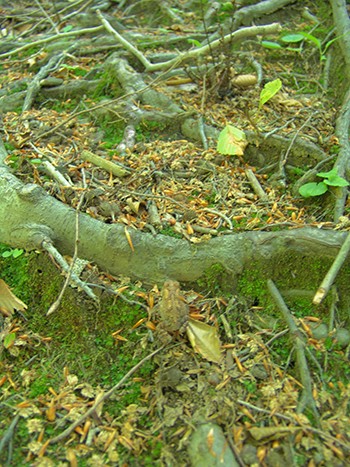
No Comments